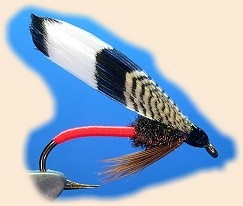Hook: Nymph, 1X long (In this case Mustad 3906B), size 10-12.
Thread: Red Uni-Stretch for body, black 6/0 to finish the fly.
Body: Rear half, red Uni-Stretch; front half, peacock herl.
Throat: Brown hackle barbs.
Wing: A section of black-and-white barred wood duck flank feather.
1. Start the Uni-Stretch just in front of mid-shank.
The Uni-Stretch will be used for the body of the fly,
then we will switch to black 6/0 thread to complete
the fly. Any other kind of red floss could be used;
it would just have to be secured with the black thread.
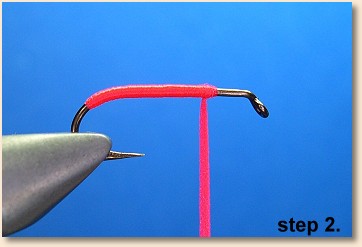
2. Wrap the Uni-Stretch back partially down the hook
bend and forwards to the tie-in point. Secure it with
one half-hitch and cut.
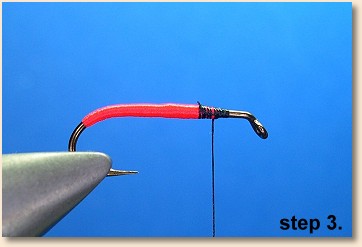
3. Start the black thread at the Uni-Stretch tie-in
point. Take a couple extra wraps to secure the Uni-Stretch.
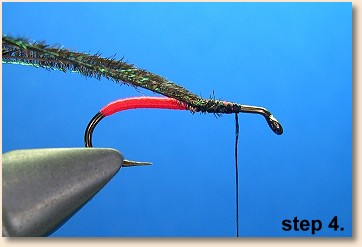
4. Wrap the black thread back to midshank and tie in 3-4
peacock herls by their tips. In this particular fly, I used
three herls. Wrap the black thread forwards to about half-way
between mid-shank and the hook eye.
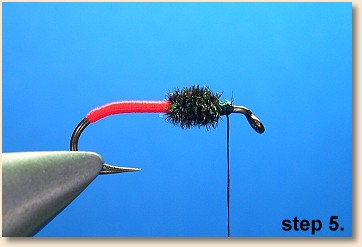
5. Twist the peacock herls with a pair of hackle pliers
and wrap forwards to the thread. Secure the peacock herls
with a couple wraps of thread and cut the excess.
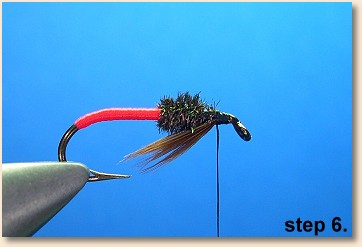
6. Tie in a throat using a few brown hackle fibers. In this
fly I used brown hen. I like the throat to just touch the
hook point.
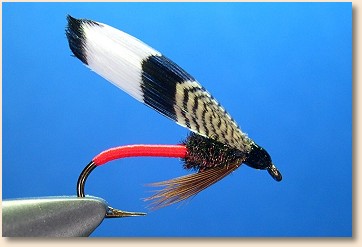
7. To make the wing on this fly, cut a section of a barred
wood duck flank feather that is twice as wide as the hook
gap. Fold the feather section in half lengthwise and tie
it in using a pinch wrap to make sure it stays on top of
the hook shank. Secure the feather with a few thread wraps.
Shape the head with a few more thread wraps. Secure with a
whip finish and clip the thread. I like to finish this fly
with a thin coat of 5-minute epoxy. The epoxy protects the
thread wraps and gives the fly a neat head.

